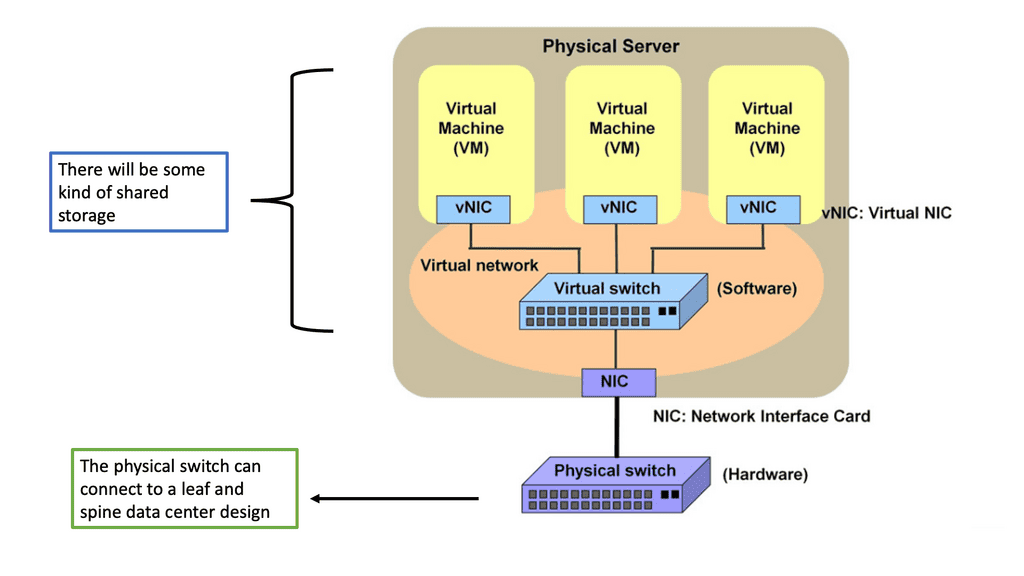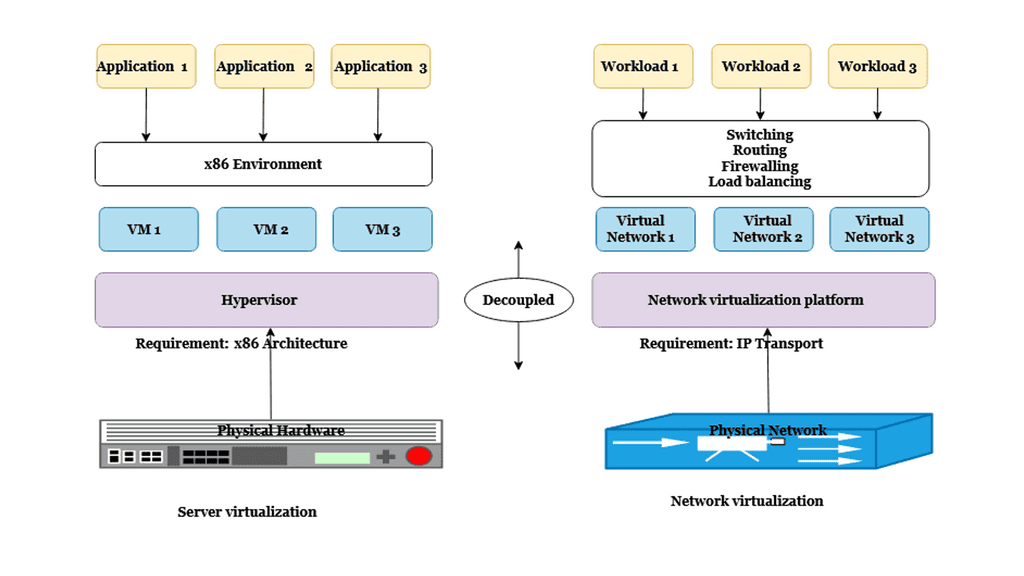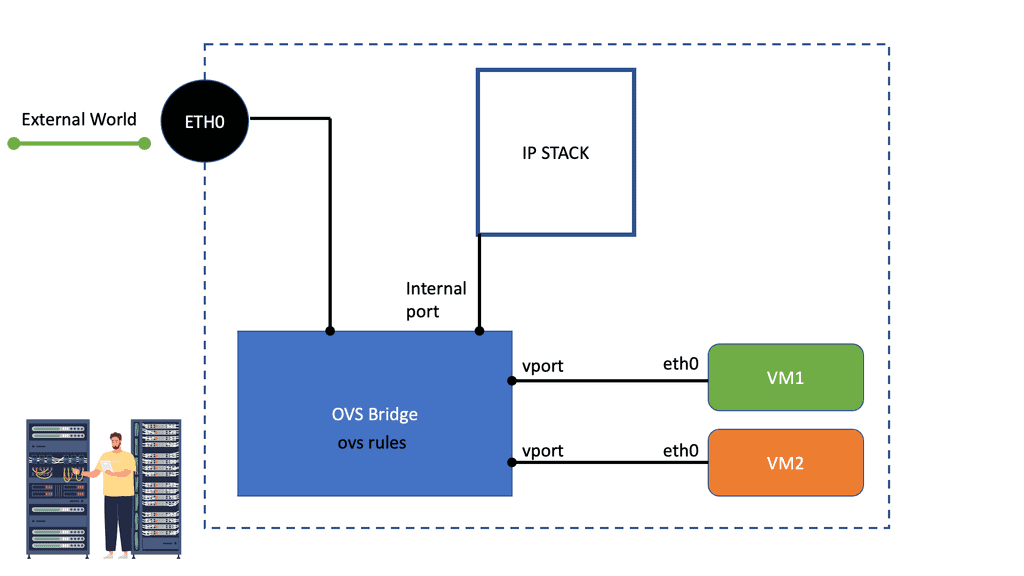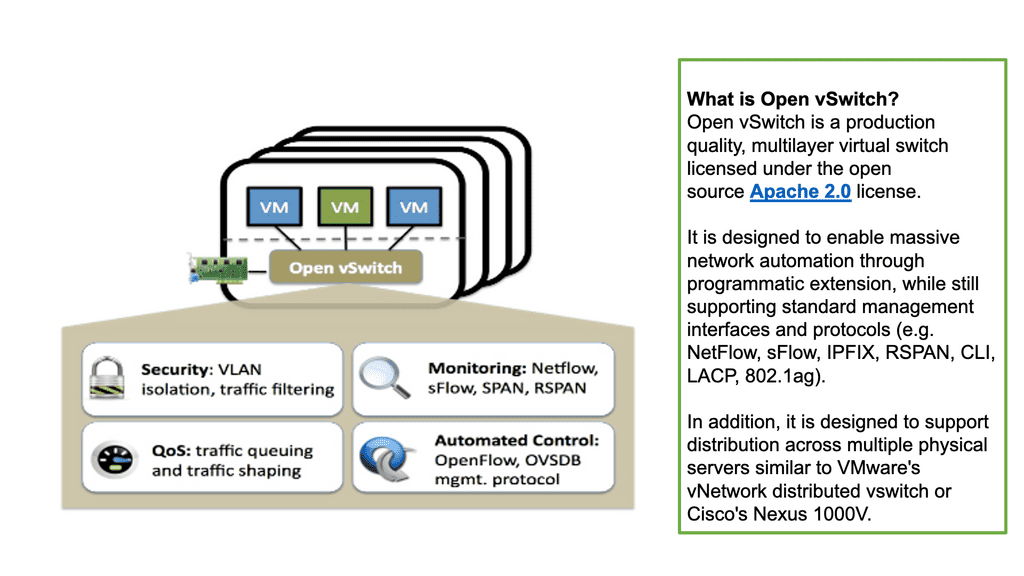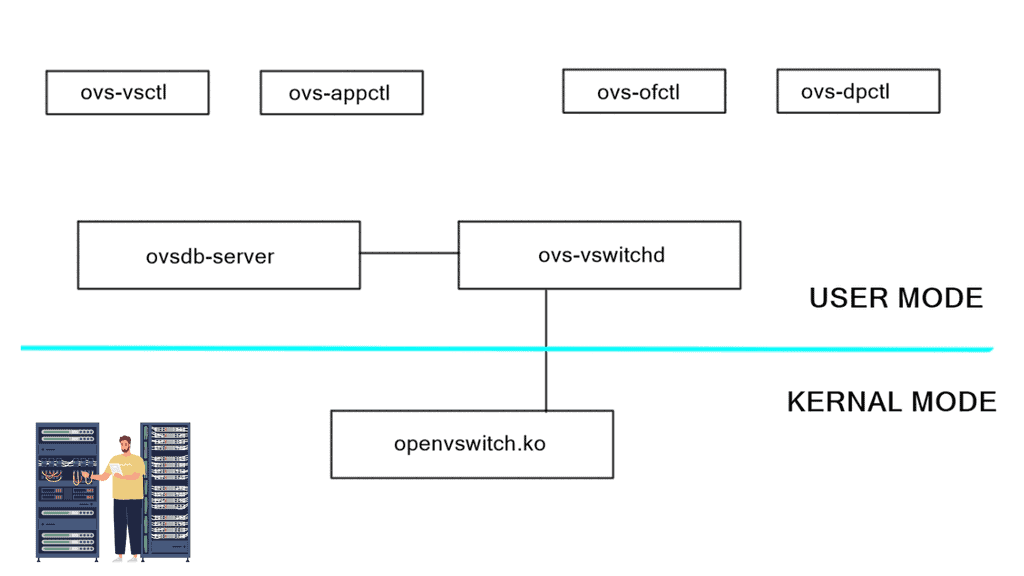Stateless Network Functions
In the ever-evolving world of networking, the concept of stateless network functions has emerged as a game-changer. This revolutionary approach to network architecture is transforming the way we design, deploy, and manage networks. In this blog post, we will delve into the intricacies of stateless network functions and explore their profound impact on the networking landscape.
Stateless network functions (SNFs) are a paradigm shift from traditional network architectures. Unlike their stateful counterparts, SNFs do not store session-specific information, making them highly scalable and agile. These functions process packets independently, without relying on the state of previous packets, enabling faster processing and reduced latency.
Enhanced Scalability: By eliminating the need to maintain session state, SNFs can handle a significantly larger number of concurrent sessions. This scalability is crucial in modern network environments where the number of connected devices and data traffic is growing exponentially.
Flexibility and Modularity: Stateless network functions promote flexibility and modularity in network design. Each function can be developed, deployed, and updated independently, allowing network operators to adapt to changing requirements quickly. This modular approach also fosters innovation and encourages the development of specialized network functions.
Improved Fault Tolerance: With SNFs, network failures and disruptions can be contained more effectively. Since stateless functions do not rely on session-specific information, failures in one function do not impact the entire network. This fault-tolerant characteristic ensures more resilient and reliable network operations.
Software-Defined Networking (SDN): Stateless network functions play a pivotal role in SDN deployments. By decoupling control and data planes, SDN architectures can leverage the agility and scalability of SNFs. This enables efficient traffic management, dynamic resource allocation, and rapid network provisioning.
Network Function Virtualization (NFV): In the realm of NFV, stateless network functions are instrumental in achieving network virtualization and service chaining. By encapsulating network functions in virtualized environments, SNFs enable on-demand scaling, improved resource utilization, and simplified network management.
Stateless network functions are revolutionizing network architecture by offering enhanced scalability, flexibility, and fault tolerance. With their applicability in SDN, NFV, and beyond, SNFs are driving the transformation of the networking landscape. As we embrace this paradigm shift, we can expect more agile, scalable, and efficient networks that can meet the demands of the digital age.
Matt Conran
Highlights: Stateless Network Functions
**The Basics: What Does Stateless Mean?**
To grasp the significance of stateless network functions, it’s essential to understand what “stateless” entails. In a stateless system, each request from a client is treated independently, without relying on stored information from previous interactions. This approach contrasts with stateful systems, where previous interactions influence current actions. Statelessness enhances network efficiency by reducing dependencies, allowing for seamless scaling and improved fault tolerance.
**Benefits of Stateless Network Functions**
One of the primary advantages of stateless network functions is their scalability. Since each request is independent, adding more resources to handle increased load is straightforward. This flexibility is vital for networks experiencing unpredictable traffic patterns. Additionally, statelessness enhances fault tolerance. In the event of a failure, the system can easily reroute requests without worrying about lost state information, ensuring consistent service availability.
**Challenges in Implementing Stateless Network Functions**
While the benefits are clear, transitioning to stateless network functions presents challenges. One significant hurdle is the need for efficient data storage solutions to handle the information typically maintained by stateful systems. Developers must also address security concerns, as stateless systems can be more vulnerable to malicious attacks if not properly secured. Despite these challenges, the potential for improved performance makes the effort worthwhile.
Understanding Stateless Network Functions
Stateless network functions, also known as SNFs, represent a paradigm shift in network architecture. Unlike their traditional counterparts, which rely on maintaining and managing session states, SNFs operate independently, without knowledge of prior interactions. This statelessness increases scalability, flexibility, and simplicity in network design.
The adoption of stateless network functions brings forth an array of advantages. Firstly, SNFs reduce complexity and enhance overall system performance by eliminating the need for session state management. Additionally, the statelessness enables horizontal scalability, empowering networks to handle an ever-increasing number of requests without compromising efficiency. Moreover, SNFs facilitate faster network deployment, as their independence from the session state eliminates the need for complex configurations.
Use Cases and Applications:
A- Stateless network functions find applications across various domains. In cloud computing, SNFs enable efficient load balancing and dynamic resource allocation. They also prove invaluable in network security, as their statelessness mitigates the risk of session-based attacks. Furthermore, SNFs are leveraged in content delivery networks (CDNs) to optimize content routing and improve user experience.
B- While stateless network functions offer immense potential, specific challenges must be addressed. One such concern is the loss of session-related information, which might be crucial in particular scenarios. Additionally, transitioning from traditional architectures to stateless paradigms requires careful planning and potential modifications to existing infrastructure.
Benefits of Stateless Network Functions:
1. Enhanced Scalability: SNFs offer improved scalability by eliminating the need to store session state information. Network devices can handle more packets and perform better, making them ideal for large-scale deployments and high-traffic scenarios.
2. Simplified Network Management: Stateless network functions simplify network management by reducing the complexity associated with session state maintenance. This streamlined approach allows for more straightforward configuration, troubleshooting, and monitoring, improving operational efficiency.
3. Increased Flexibility: SNFs enable more flexible network architectures that can be easily deployed and scaled without session state limitations. This flexibility allows organizations to rapidly adapt their networks to changing demands and deploy new services.
4. Enhanced Security: Stateless processing enhances network security by reducing potential attack vectors. Since SNFs do not rely on session state information, they minimize the risk of session hijacking or data leakage, leading to more robust and secure networks.
Applications of Stateless Network Functions:
1. Load Balancing: Stateless network functions are well-suited for load-balancing applications. They enable efficient network traffic distribution across multiple servers or resources, ensuring optimal resource utilization and improved application performance.
2. Deep Packet Inspection: SNFs can be used for deep packet inspection (DPI), a technique that analyzes the content of network packets for security or application identification purposes. The stateless nature of SNFs allows for faster and more efficient DPI, enabling real-time threat detection and network optimization.
3. Network Function Virtualization (NFV): Stateless network functions are foundational to network function virtualization (NFV) architectures. By decoupling network functions from dedicated hardware, NFV leverages SNFs to achieve greater flexibility, scalability, and cost-effectiveness in network deployments.
**Tight State and Processing**
New technology is needed, and it’s time to break the tight state and processing. This involves decoupling the existing network function design into a stateless processing component ( stateless network functions) and a data store layer. Doing this and breaking the tight coupling enables a more elastic and resilient network functions infrastructure.
Before you proceed, you may find the following posts helpful:
Stateless Network Functions
The Role of Networks
Let’s face it. Networks need to be both scalable and sophisticated. To be successful, you need to completely redesign the network functions, such as routing and firewall functions, along with the underlying platforms that manage and orchestrate these functions. However, to accomplish this, you need to create an entirely new architecture and adapt the existing technology to this new architecture.
If you look at technologies used for cloud storage, no one has ever used them for networks. Why is this? The reason is mainly down to performance requirements, such as throughput and latency in distributed systems.
One can understand that the industry will be very pushy with this type of disruptive technology, saying that it is just impossible. But we need to give the world something new. It deserves the ability to customize networks on-demand. It would help to have a logical place to start with a new architecture.
Stateless Network Functions: Changing the environment
Decentralized workloads, the decline of on-premise, and the increase in multi-cloud deployments have created one of the most extensive connectivity challenges for data centers. A key finding is that colocation providers, traditionally serving as space, power, and physical network connectivity resources, should not become the hub for all traffic as workloads decentralize.
The problem is these colocation providers have not focused on connectivity that requires multi-tenancy and routing, and they usually have physical cloud connects; this has introduced growing management and operational challenges, which will only increase in large-scale deployments.
Cloud Connect is where you need to connect multiple enterprises, where these enterprises need to connect to various cloud providers. All of these tenants need BGP routing, firewall functions, and NAT, but to do this on a larger scale with a solution that couples the state cannot scale and be reliable.
New technologies come in waves – some appear, and others disappear.
The market needs a new type of technology, a software-defined interconnect like the Internet exchange. This came to light in 2016 when Laurent Vanbever proposed a software-defined internet exchange based on OpenFlow ( what is OpenFlow ) known as SDX; software-defined internet exchange is an SDN solution originating from the combined efforts of Princeton and UC Berkeley. It aims to address IXP pain points by deploying additional SDN controllers and OpenFlow-enabled switches. It doesn’t try to replace the entire classical IXP architecture with something new; rather, it augments existing designs with a controller.
Software-defined interconnect (SDIX)
However, a software-defined interconnect (SDIX) is a new category of offering that allows colocation providers to manage their cloud connects via software and extend their connectivity control. It should cover the cloud connection and multiple data center interconnects. In the past, the colocation providers focused on space and power. However, in today’s world, they have new responsibilities. The responsibilities now extend to new types of connectivity for customers. Customers now have new requirements.
They must move their data from one colocation facility to another to avoid latency or backup purposes. For these cases, colocation providers need a new type of platform to direct all of their different tenant’s tasks and requirements to a software-based platform.
The Tight Coupling
Why is this different? The underlying technology concerns network functions such as firewalls, routers, and load balancers; regardless of the application architecture and requirements, these network functions are physical boxes. The challenge is that traffic that flows through these boxes is tightly coupled with the box.
The physical box, virtual machine, or container performing a network function is coupled with the state. What happens with the state when you launch a new network function or redirect the traffic to a backup device? This will affect the application. This might be acceptable for a single application but not for a large-scale deployment when you have millions of connections and applications running on top of network functions.
Network Function Virtualizaton
Network function virtualization (NFV) and NFV use cases didn’t help here. All it did was change the physical boxes to virtual ones. It’s like changing a physical appliance in Dublin to a cloud-based provider. Is this the future? NFV inherits the same design and features as the physical box. But what needs to be done is realizing that the problem is the state. You need to decouple the dynamic state from each network function and put them in a high-performance data store within a cluster of commodity hardware and switches—a hardware-agnostic solution with code that is not open source.
Network function stateless
Then, you can make the network function stateless, so it’s physically just a thread. It doesn’t affect application performance if it fails, as the state is collected from the data store. This is needed as an underlying design, but does it seem possible? There will be overheads from decoupling the state.
The state can be put into a cluster of servers. Some servers maintain some of the state, and some of the other servers can be the network functions. The state is not physically in another data center or location. Every type of dynamic state, such as counters, timers, and handshaking that you see in the TCP flow, all of which is state, is a challenge to decouple without breaking application performance. However, this can be done by adapting technology-distributed systems—a database to store the state needed that is designed for high-performance computing. A read for a state should be around 5 microseconds.
An algorithm is needed to read and write the state in a way that reads multiple packets simultaneously. This enables you to overcome any latency issues and achieve better performance than traditional appliances that have the state coupled.
Stateless network functions are revolutionizing networking infrastructure by offering enhanced scalability, simplified management, increased flexibility, and improved security. SNFs are paving the way for more agile and efficient networks with their wide range of applications. As organizations embrace digital transformation, understanding and harnessing the potential of stateless network functions will be vital to building resilient and future-proof network architectures.
Summary: Stateless Network Functions
Stateless network functions (SNFs) have emerged as a groundbreaking approach to network architecture. Unlike traditional network functions, SNFs do not rely on maintaining a session state, allowing for greater scalability, flexibility, and efficiency.
Benefits of Stateless Network Functions
SNFs offer several advantages, making them a compelling choice for modern network infrastructures. Firstly, their stateless nature enables horizontal scaling, allowing networks to handle increasing traffic demands without sacrificing performance. Additionally, SNFs simplify network management by eliminating the need for complex state synchronization mechanisms.
Use Cases and Applications
The versatility of stateless network functions opens up a wide range of use cases across various industries. From load balancing and firewalling to content delivery networks and edge computing, SNFs provide a flexible and adaptable solution for network operators.
Challenges and Considerations
Although stateless network functions bring numerous benefits, they are not without challenges. Ensuring security and maintaining data integrity can be more complex in stateless architectures. Additionally, specific applications heavily relying on session state may not be suitable for SNFs.
Future Trends and Innovations
As technology evolves, so does the potential for stateless network functions. Innovations such as programmable data planes and advanced traffic steering algorithms promise to enhance the capabilities of SNFs further, enabling more efficient and intelligent network architectures.
Conclusion:
Stateless network functions represent a paradigm shift in network architecture, offering scalability, flexibility, and simplified management. While they may not fit every use case, their potential for innovation and future development is undeniable. As networks continue to evolve and demand for performance grows, embracing stateless network functions can pave the way for a more efficient and agile network infrastructure.




